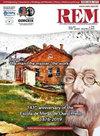从手机印刷电路板中浸出金和银
Q3 Earth and Planetary Sciences
引用次数: 23
摘要
现在有各种各样的型号,尺寸和配置的手机可供消费。在该设备的生命周期结束后,回收和再利用手机印刷电路板(PCB)中的贵金属是主要目标。因此,这项工作的目的是表征PCB中存在的金和银,并开发使用氰化物替代试剂(如硫代硫酸钠和硫代硫酸铵)的回收途径。这些试剂对环境和工人健康的危害较小。金和银的首次表征是用王水进行的。结果表明,每吨pcb中Au含量为86.26g, Ag含量为123.85g。第二次表征用商用氰基试剂进行,得到了112.02g Au/t pcb和26.13g Ag/ t pcb。以硫代硫酸盐为溶剂进行浸出研究,与以氰化物为基础的试剂进行表征的结果相比,获得了9.02g Au/t pcb和33.88g Ag/t pcb的浸出率。本文章由计算机程序翻译,如有差异,请以英文原文为准。
Leaching of gold and silver from printed circuit board of mobile phones
Nowadays there is a wide variety of models, sizes and configurations of mobile phones available for consumption. After the life cycle of this equipment, the recycling and reuse of the precious metals found in the printed circuit boards (PCB) of the mobile phones are principal objectives. Thus, the objective of this work was to characterize the gold and silver present in a PCB and develop a recycling route using alternative reagents for cyanide, such as sodium and ammonium thiosulfate. These reagents are less harmful to the environment and worker health. The first characterization of gold and silver was performed with aqua regia. The results show 86.26g Au/ton of PCBs and 123.85g Ag/ton of PCBs. The second characterization was performed with a commercial cyanide-based reagent and 112.02g Au/ton of PCBs and 26.13g Ag/ ton of PCBs were obtained. A leaching study with solutions based on thiosulfate was performed and an extraction of 9.02g Au/ton of PCBs and 33.88g Ag/ton of PCBs was obtained, compared to characterization results using a cyanide-based reagent.
求助全文
通过发布文献求助,成功后即可免费获取论文全文。
去求助
来源期刊

Rem-Revista Escola De Minas
工程技术-工程:土木
自引率
0.00%
发文量
0
审稿时长
6-12 weeks
期刊介绍:
REM – International Engineering Journal (antigua REM – Revista Escola de Minas) es la primera revista técnica de Sudamérica. Fue fundada en enero de 1936 por los estudiantes de la Escuela de Minas de Ouro Preto y desde entonces se ha especializado en la publicación de artículos en las áreas de la Ingeniería Civil, Geología, Metalurgia y Materiales y, Minería y Mecánica y Energía.
Su objetivo es servir como un medio de publicación para los trabajos técnicos y científicos originales de investigadores nacionales y extranjeros en esas áreas. Contribuciones originales (artículos y cartas) son aceptadas. Artículos de revisión dependen de la invitación y/o análisis de los Editores.
El envío de artículos para su publicación implica que el trabajo no ha sido publicado previamente, que no está siendo presentado para su publicación en otra revista y no se publicará en otro lugar, en la misma forma, sin el permiso, por escrito, de los Editores/Autores.
 求助内容:
求助内容: 应助结果提醒方式:
应助结果提醒方式:


